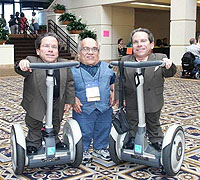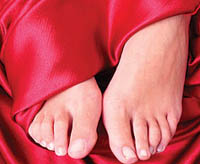Measuring body mass index is one of the best ways to determine how far a person is from obesity.
Content
What is body mass index?
In essence, BMI is the result of a simple arithmetic calculation based on the weight indicators and the growth of a particular person. This value shows how necessary treatment of obesity (which, as is known, can cause a critical deterioration in health), and a good result is considered to be the number falling into the interval between 18.5 and 24.9. According to the authors of the report published in the August issue of the Medical Journal of New England for 2006, excessive weight in adulthood increases the risk of premature death.
On the other hand, too low weight and low BMI (less than 18.5) are also forced to pay high attention to their health.
Many health professionals consider them a good tool to assess the degree of health threat, only the accuracy of the result remains. Some experts believe that the best way will take a centimeter tape and measure the waist girth. Is it possible to combine both methods?
How to consider body mass index?
In 1998, the National Institute of Health (The National Institute of Health) announced new standards of body mass index, replaced old, who lost the relevance.
The body mass index is calculated by the formula:
![]() ,
,
where:
- M — body weight in kilograms,
- H — Growth in meters.
That is, for a person weighing a 63 kilogram and an increase in 174 centimeters, the calculation will be as follows:
63 / (1.74×1.74) = 20.8
According to the definitions of the National Institute of Health, a healthy weight is considered to be the one in which the BMI is falling into the interval between 18.5 and 24.9; overweight - 25-29.9; obesity - 30 or more.
Select specialists
 Many health professionals choose BACs as a major tool in working with patient weight. And, although this method of attributing a person to a certain weight category is really simple and Döshev, it does not give a clear idea of the state of health of a particular person. Only a set of data, such as the percentage of fat in the body in the body, with information on nutrition and physical activity and, of course, the history of the disease of the patient's family members - can draw an accurate picture of human health status.
Many health professionals choose BACs as a major tool in working with patient weight. And, although this method of attributing a person to a certain weight category is really simple and Döshev, it does not give a clear idea of the state of health of a particular person. Only a set of data, such as the percentage of fat in the body in the body, with information on nutrition and physical activity and, of course, the history of the disease of the patient's family members - can draw an accurate picture of human health status.
Plus, the BMI does not take into account the age, nor the floor nor the muscular mass. In addition, there are no differences between the skinny body weight (the weight of the muscles and bones without taking into account fat) and the weight of the adipose tissue. As a result, a healthy young man of athletic physique may have BMI above, than a similar weight full of middle-aged people, and an elderly person — An indicator within the normal range, although muscle mass is already extremely small.
This is only one reason why some experts believe that information about the volume of the waist can be more indicative than BMI.
The second argument against the BMT is that in reality, it is not paramount importance to the amount of fat in the body, but its localization, because people with a pear-like body shape (fat deposits are concentrated in the field of buttocks and honey) are less susceptible to overweight problems with health, than owners of figures «Apple» (Fat first appears in the abdomen and sides).
According to the National Institute of Health, too much waist circumference (more than 100 cm in men and more than 90 in women) at the BMI between 25 and 34.9 indicates an increased risk to earn type 2 diabetes, high pressure, pathological level of cholesterol in the blood and heart failure.
To properly measure the waist circle, no math is required: only a soft centimeter tape wrapped around your waist at the navel level or the minimum abdominal width. The tape should be lined tightly, but not crash into the body.
Katie Nonas (Cathy Nonas), a representative of the American Dietological Association (The American Dieetetic Association) and a supporter of the BMI method, argue: Using only a centimeter ribbon, we do not receive data either of age, no growth, nor even the degree of obesity of the patient. In addition, Katie believes that it is more difficult to measure its own waistly than measuring its height and weight.
The National Heart, Light and Blood Institute (USA) (The National Heart, Lung, and Blood Institute) is recommended to use as much data as possible: and BMI, and the volume of the waist, and the percentage of fat in the body, and the level of physical activity, and others that can help draw up the most complete picture of human health.
How to use the results of calculations?
To begin with, it is worth moving to more proper nutrition and regular exercise. If the weight stops growing and slowly starts to decline, you can consider the first step very successful.
And, although, of course, I really want to reset as much extra kilograms as possible, but weight loss at least 5-10 percent can radically change and pressure, and blood cholesterol and blood sugar.
Katie Nonas offers to make four steps to a healthy lifestyle:
- Increase physical activity;
- Potionically refer to food falling on the table;
- Avoid overeating;
- Annually undergoing research.
These four steps - the beginning of the road on the way to long and healthy life.









